Launch

Easter 2018 was a great moment. More than 10.000 building hours has resulted in the launching of Fram.
In the last days (and night!) before the launch I received a lot of spontaneous help from friends for which I am very grateful. Without their help and creativity I had not been able to get the boat out of the shed and into the water in time.
The engine got her oil just before the maiden trip to the homeport in Lelystad. Because the diesel tank is not yet connected, I temporarily used a jerrycan for the fuel supply. The maiden voyage is at the same time a test for the boat and engine and because the voyage goes over open water I really liked that one of my friends, together with a volunteer crew, accompanied us with his ship to our home port.
Although she was ready to sail independently, much still needs to be done. The interior has yet to be finished, just like the beams, the technical installations and of course the rigging.
Our view from our backyard and terrace, however, has improved drastically
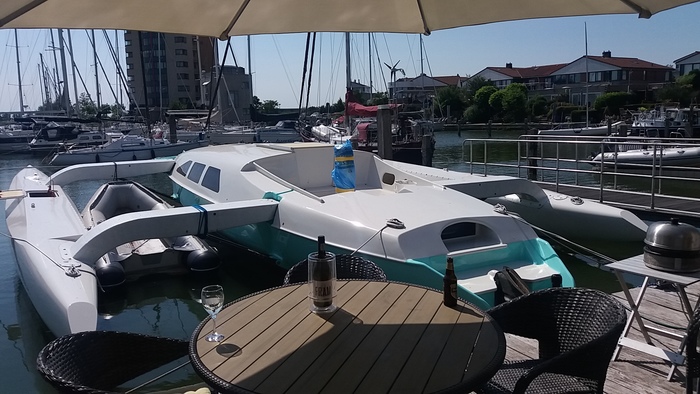

Distractions
Wow, Fram is finally floating. The last few years of the construction were extremely busy. I worked 60-70 hours at my job and spent another 24 hours on weekends working on Fram. Eventually, the pressure became significant because the building where I was constructing the boat was sold. I didn't want to find a new construction site, so I finished the boat in a way that it could sail independently to the jetty behind our house. There, I would complete the rest of the work as much as possible.
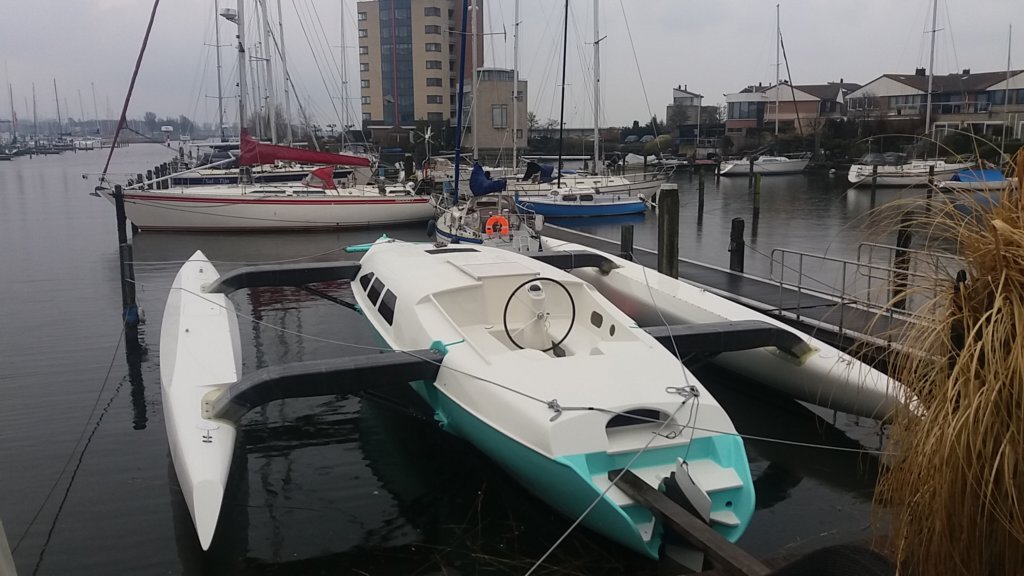
After the festive launch and some rest from the previous period, there suddenly was time for various social activities again. Something I hadn't had time for in many years, which resulted in neglecting friends and family.
To be honest, the progress of the project practically came to a halt. I had lost focus and motivation. Other projects presented themselves, such as renovations in our son's and daughter's homes. It was also nice to do something other than boat building. The pressure to finish the boat had disappeared. I started sailing again with friends and took long sea voyages to places like Spain, Svalbard, Jan Mayen, and Iceland with them. We even reached the North pole ice. Fram stayed unused and unfinished in her berth.
From the beginning, it was clear that Fram needed to be placed in a shed again to complete the painting, tidy up the flange around the beam connection with the floats, and make some through hull fittings for water supply to the toilet and watermaker. A triducer for log and depth also needs to be installed.
Renting building space in a shed is expensive, so I had to limit the construction time as much as possible. I did what I could in the water, such as making and attaching fairings to the front of the floats. The beam flanges also needed further reinforcement. All of this was done from the dinghy, not very comfortable, but it worked.
Here I’ve wrote a chapter about it.
I kept postponing the planning for this new construction phase, first due to a lack of focus and motivation, then due to the COVID situation, and later because of a few great sailing trips I took with friends.
During this time, I also acquired a mast. It came from a French Formula 40 catamaran, a relatively bare aluminum wing profile but a good fit for my boat. Besides finishing the boat, I wanted to install the mast at the new launch. So, I included that in the planning. I will dedicate a separate chapter to it.
Ultimately, the work was carried out during three months in the summer of 2023, from July 1 to October 1.

New appearance, back in the shed
When Fram was launched for the first time, I didn't have time to set up the desired painting schedule. There were only two layers of two-part paint applied and without non skid on the deck. At the time of painting the floats (too long ago), I also didn't know what the final color would be, so I had temporarily left them white. The beams were not painted at all and had, later on, only been given a layer of primer.
Now it's time to apply the final coats of high gloss paint. That means four layers of two-part paint, and a fifth layer where the non-skid paint will be applied.
Photos tell more than words.
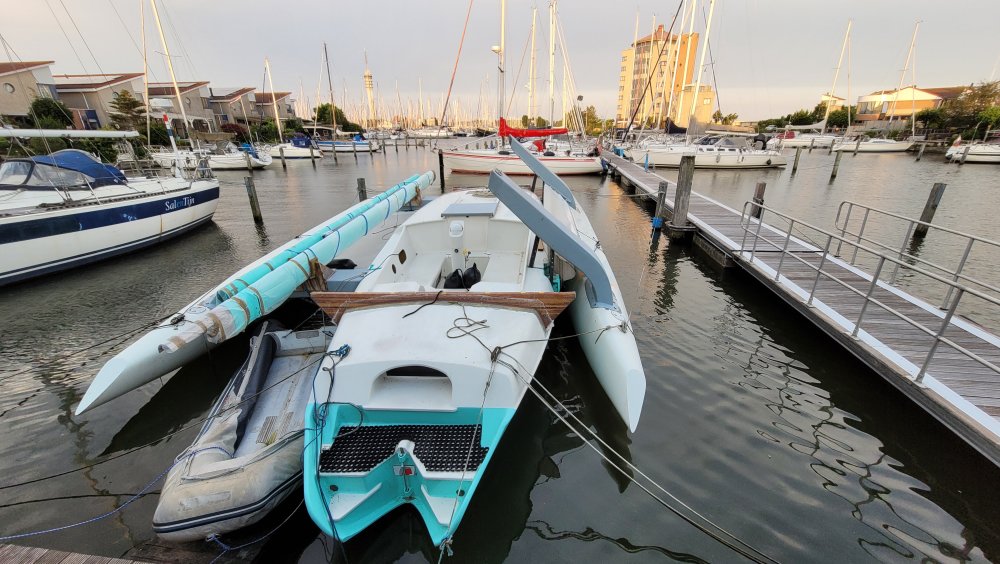
Ready to sail to the shipyard. On the way, we will pass two locks, of which the second one is not wide enough for the unfolded trimaran. With one float folded, it fits. The mast has already been painted at an earlier stage and is lying in two parts on the port float.
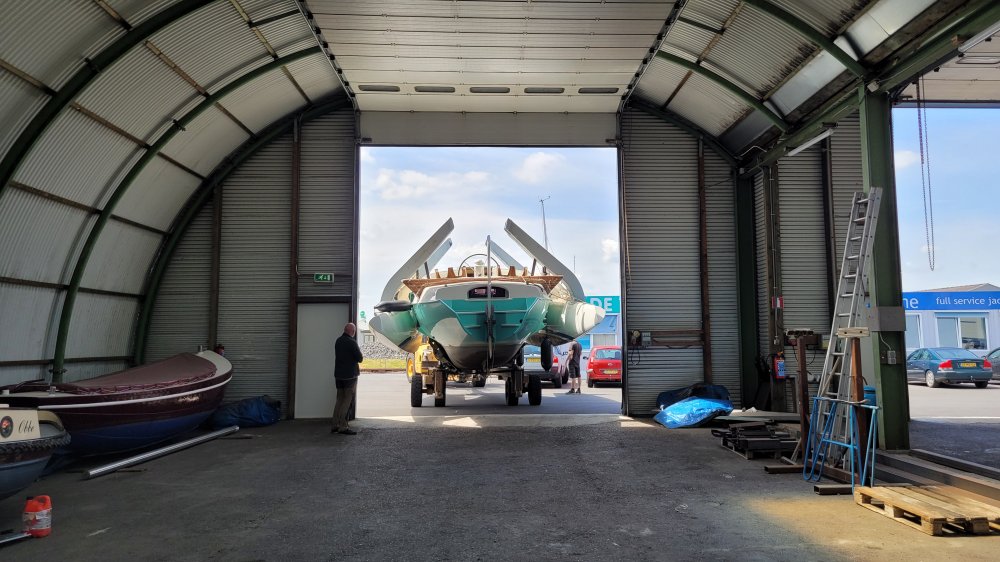
In order to fit through the door of the shed, Fram is now completely folded. It just fits.
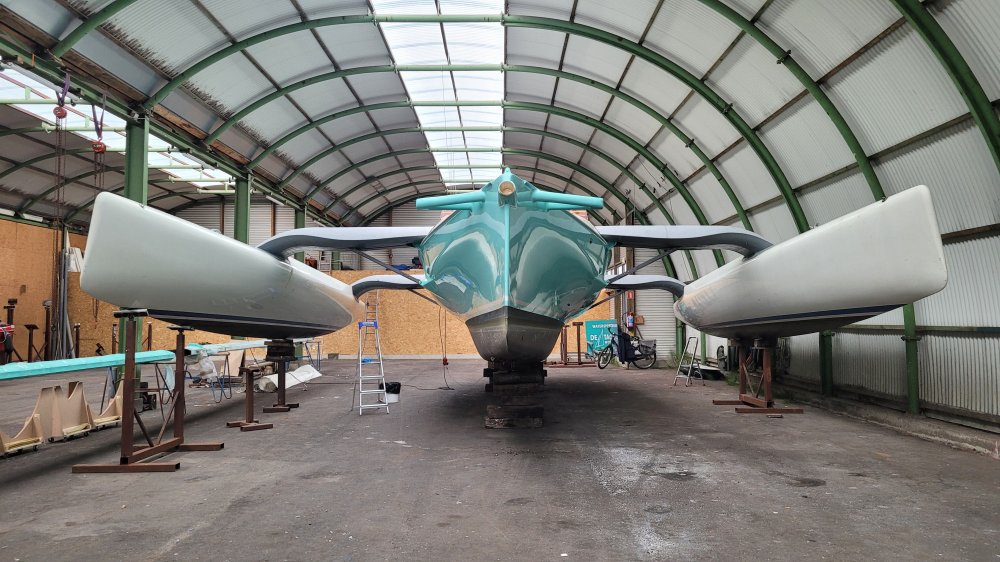
Set up and unfolded again, ready for the task.
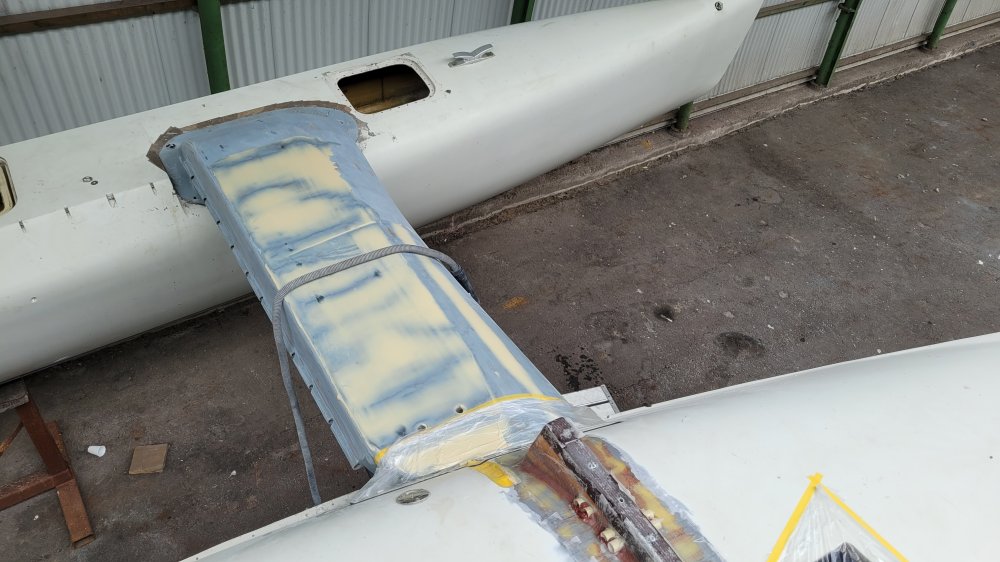
I'm starting with puttying the beams.
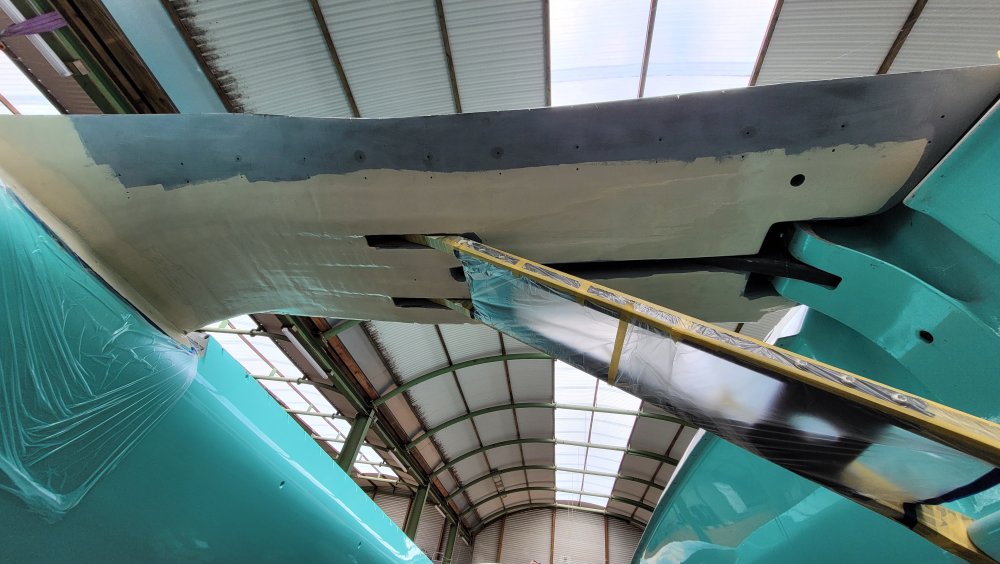
For the underside of the beams, it's not necessary. A smoother finish with a thick primer is sufficient.
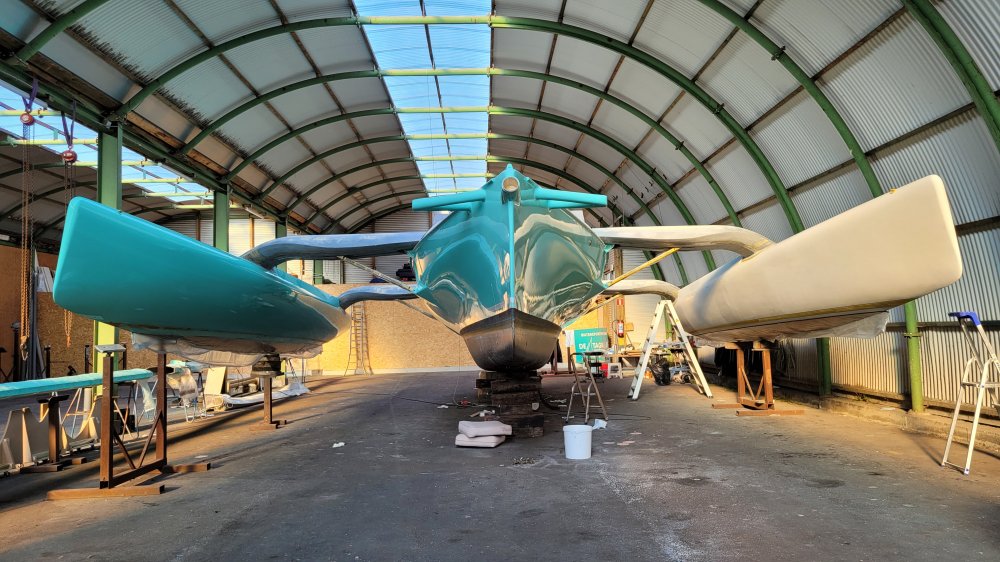
First layer of paint on the starboard float.
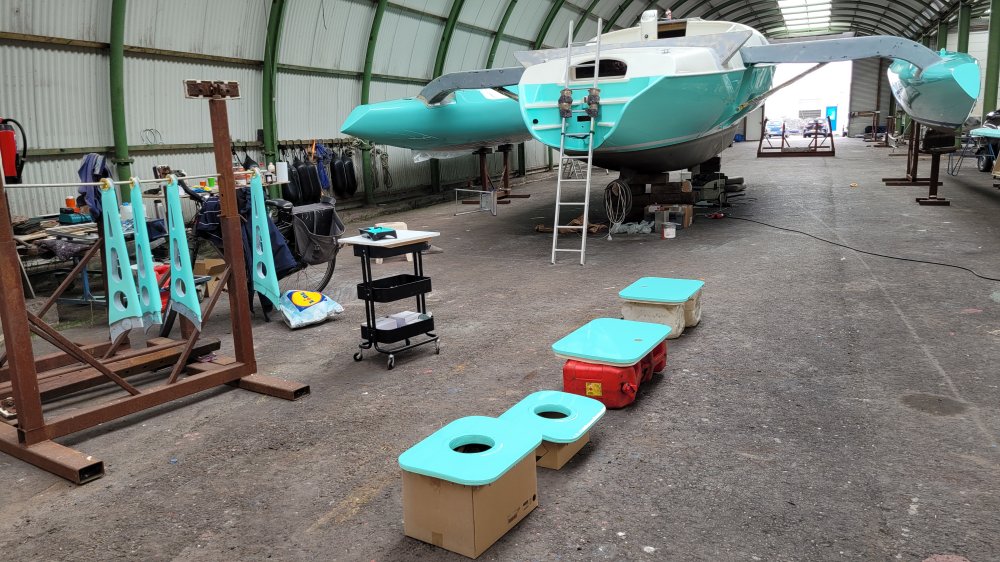
The newly made carbon spreaders have also been given a green color.
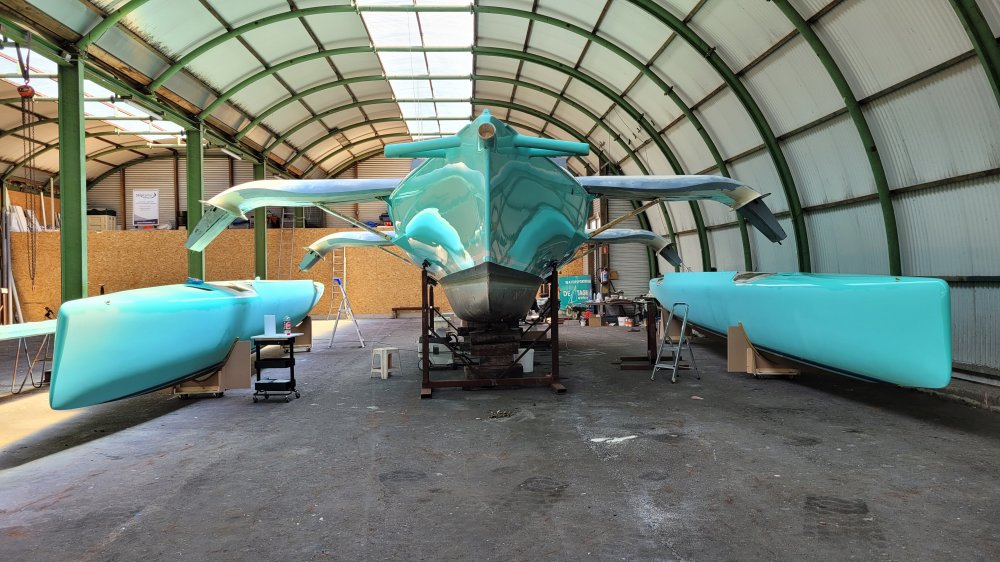
Now it's time to detach the floats from the beams so that the flanges can be finished neatly.
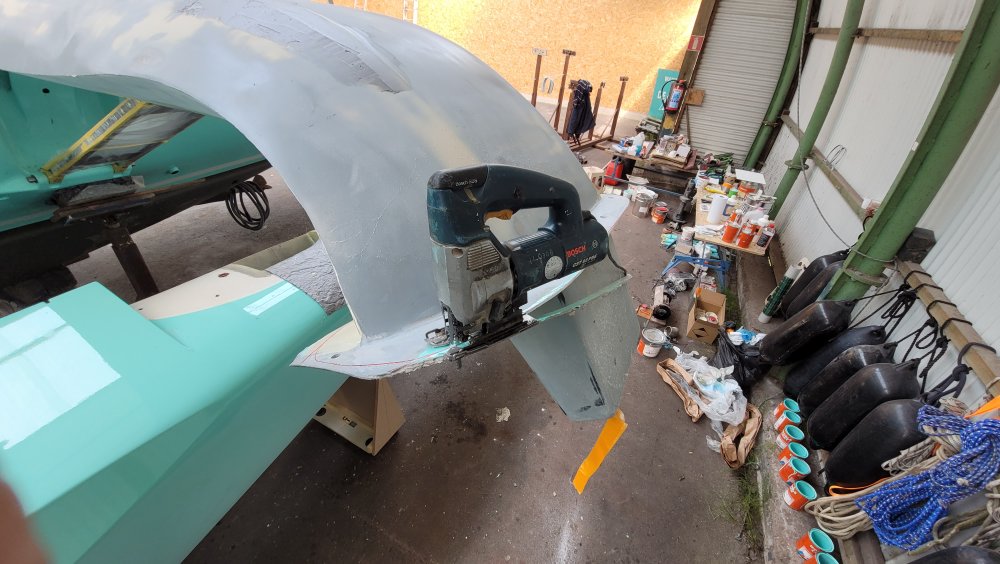
I'm using the jigsaw to give it a nice curve.
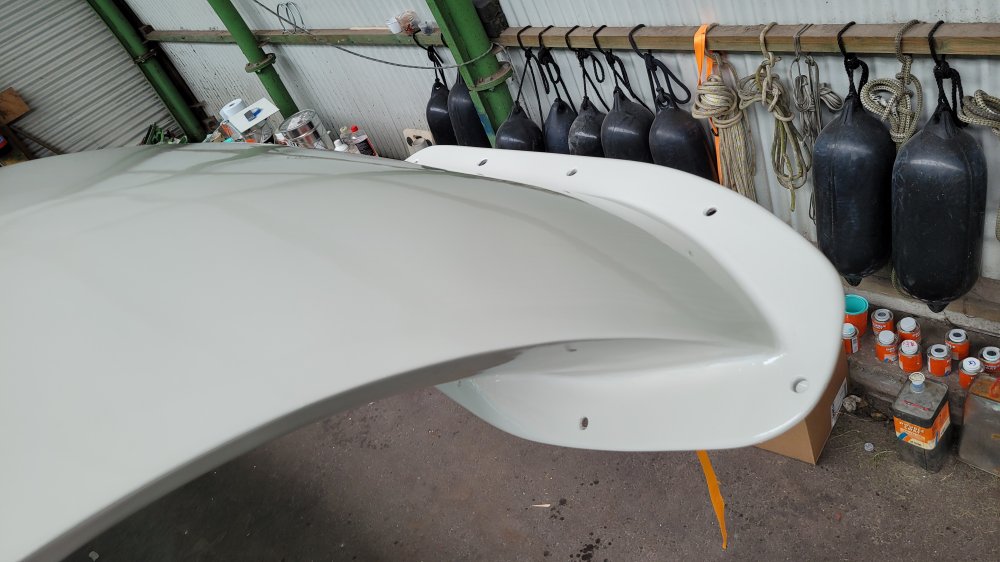
Neatly painted and provided with non-skid paint.
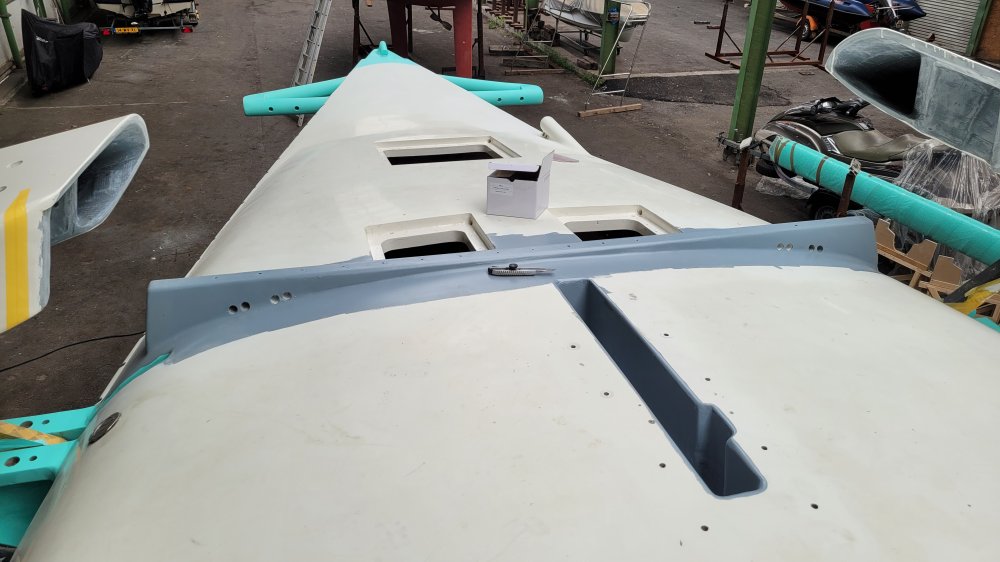
Jib boom traveler base mounted and coated with primer.
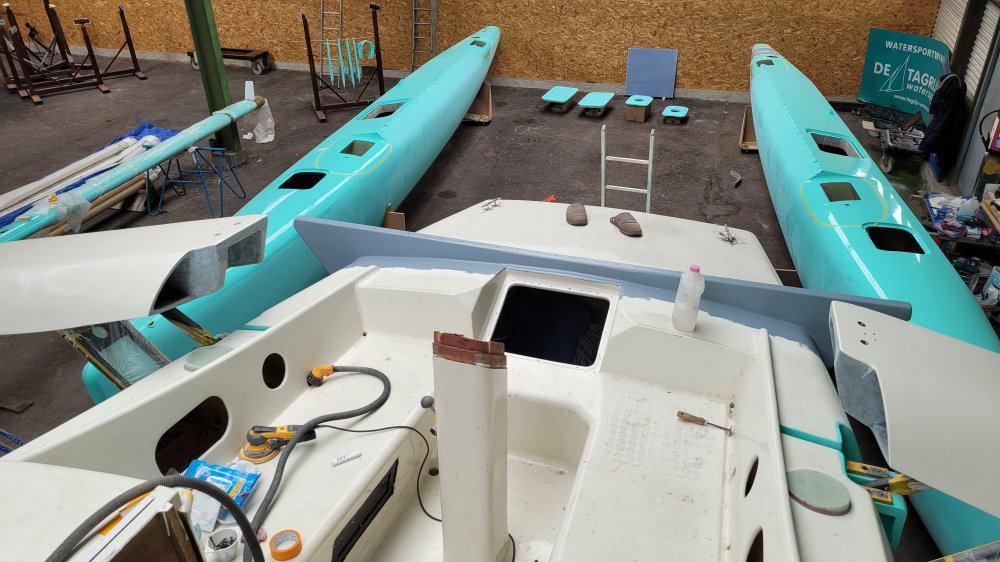
Main sheet traveler base mounted and coated with primer.
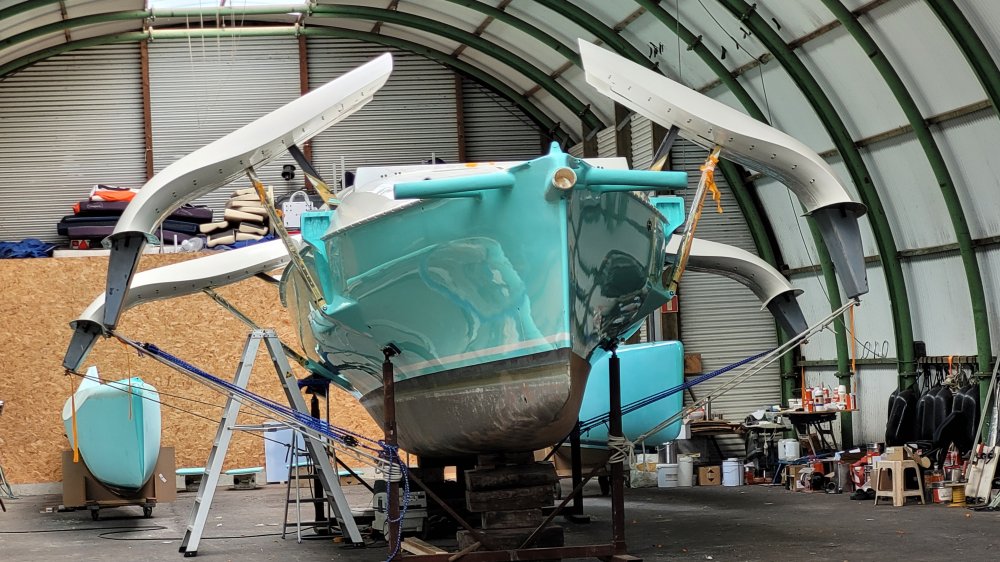
Is it a plane, an alien, a transformer, or still a boat?

Or perhaps a spacecraft? According to one of my followers.

Three boats
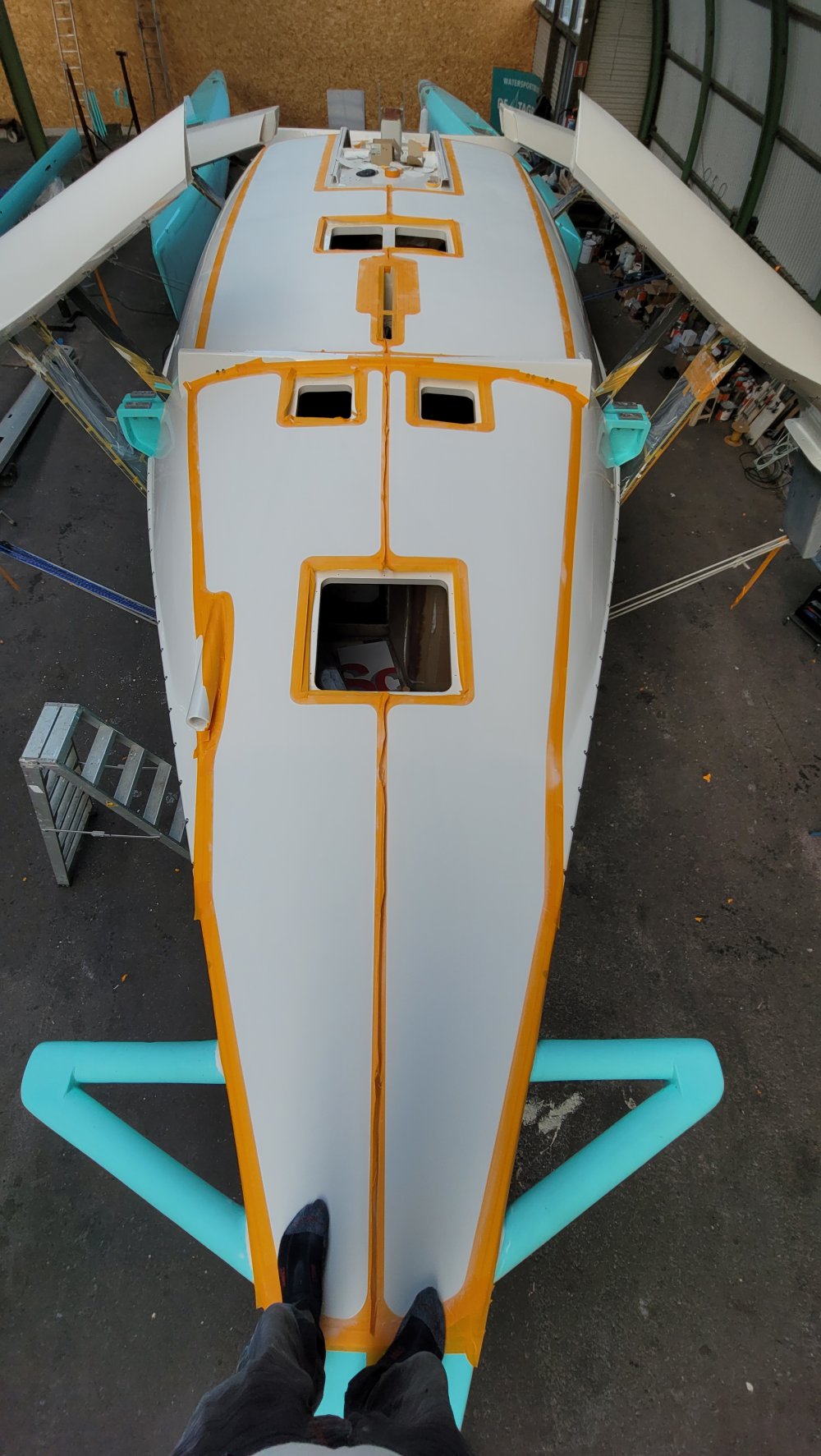
Preparing the non skid on the cabin roof.
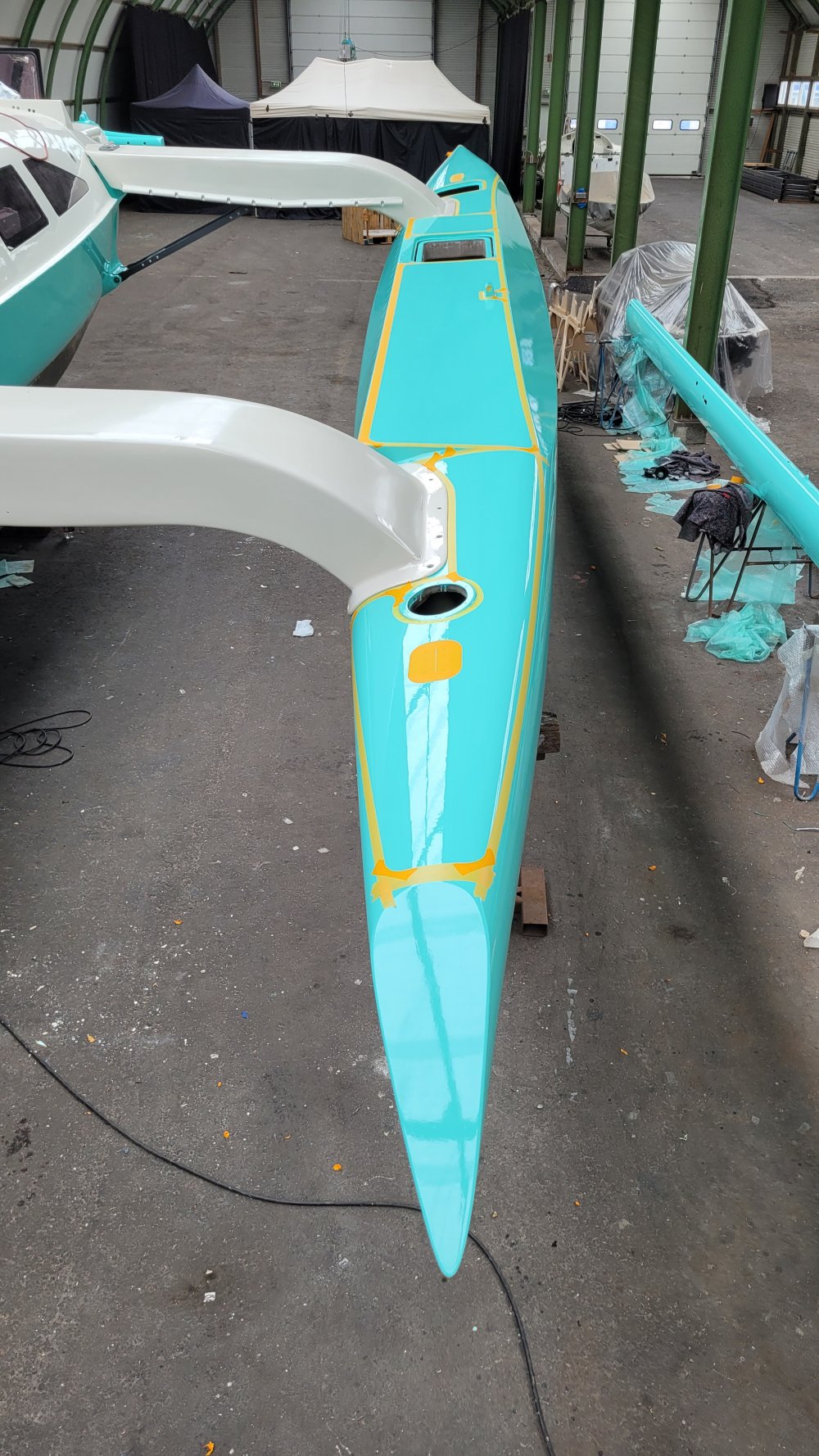
Preparing the non skid on the floats.
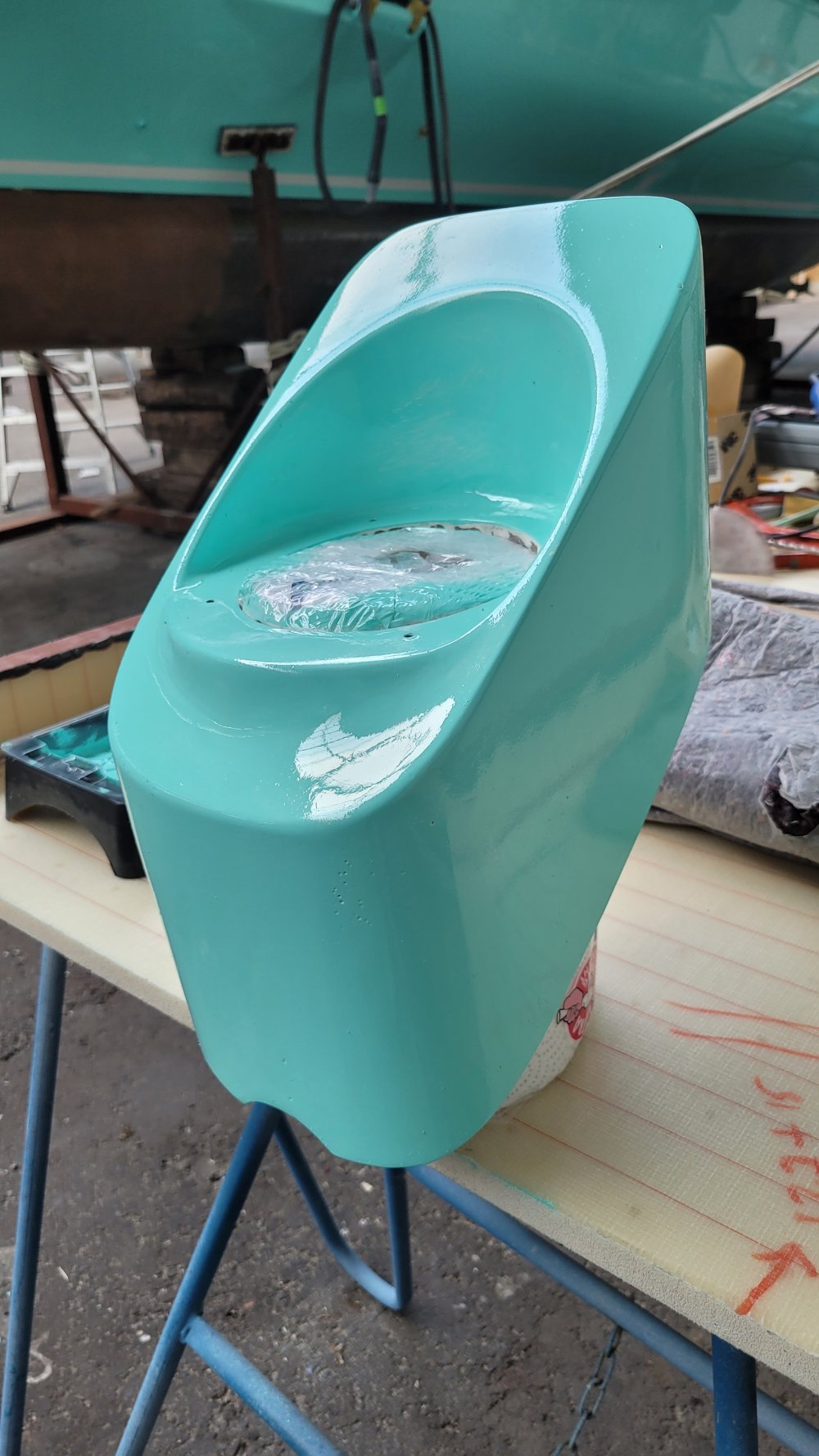
Compass house in style.
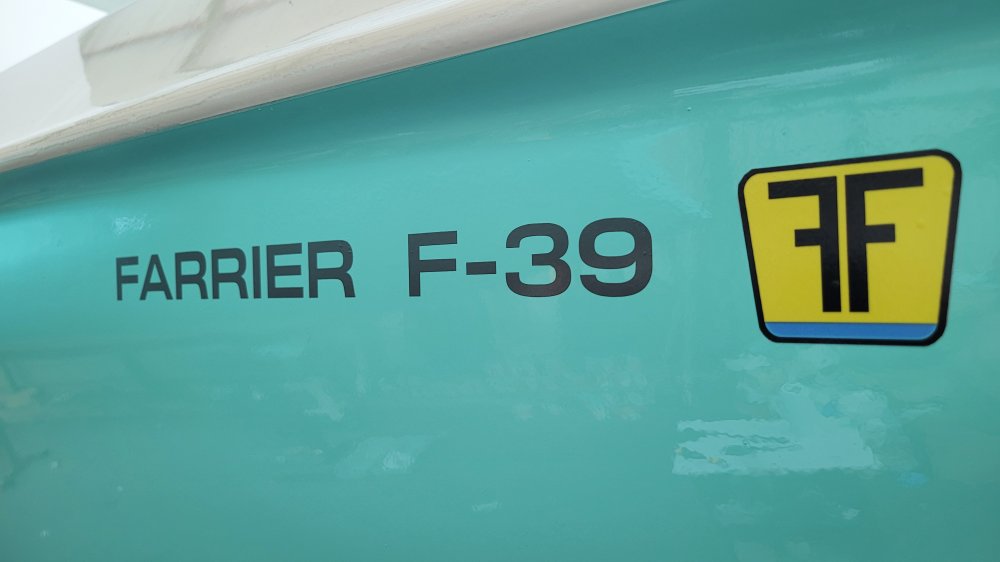
Farrier brand.
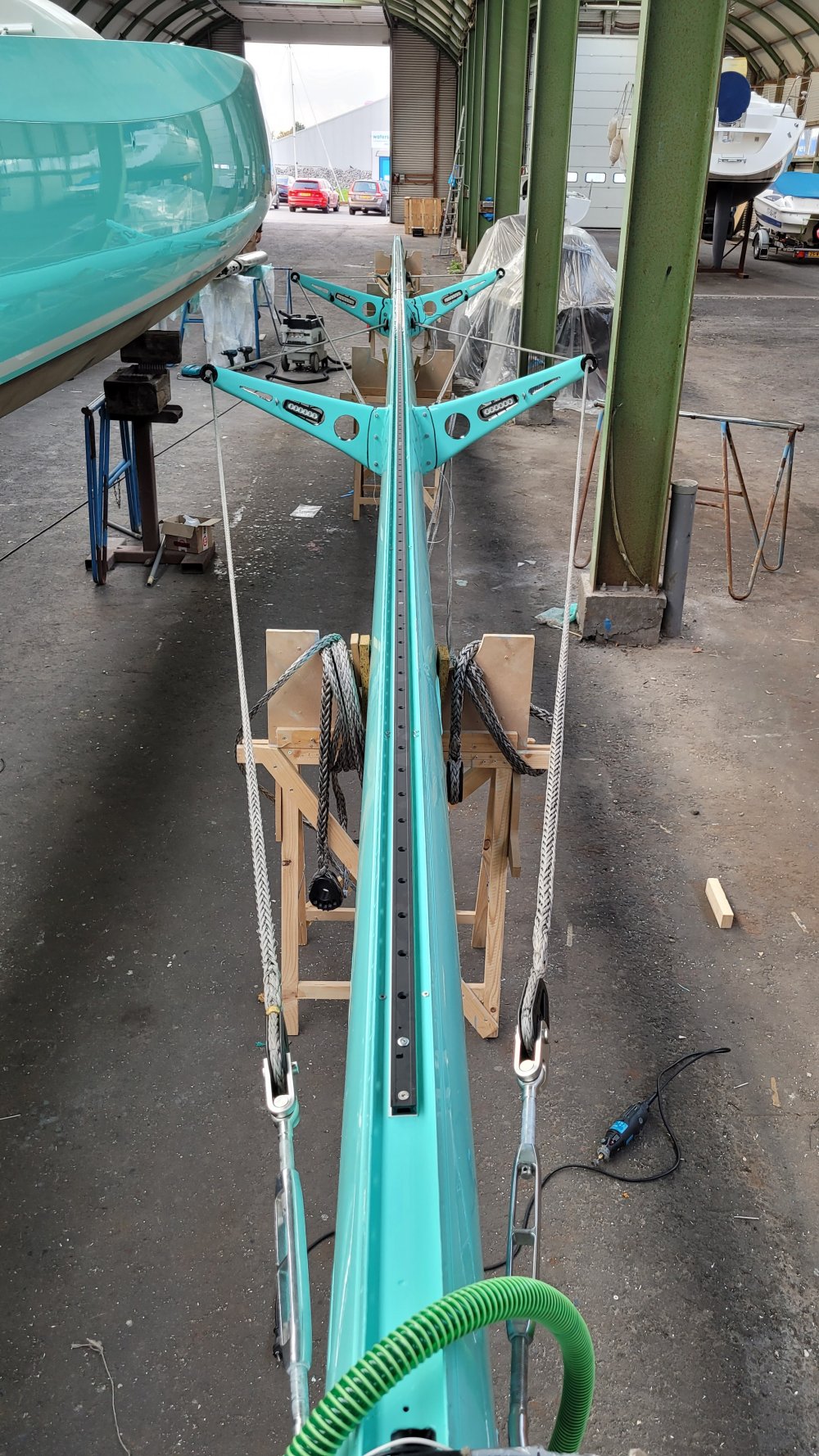
Building the mast, (see also the rigging chapter, still under construction).

Creating cutouts for the lashings of the bow net.
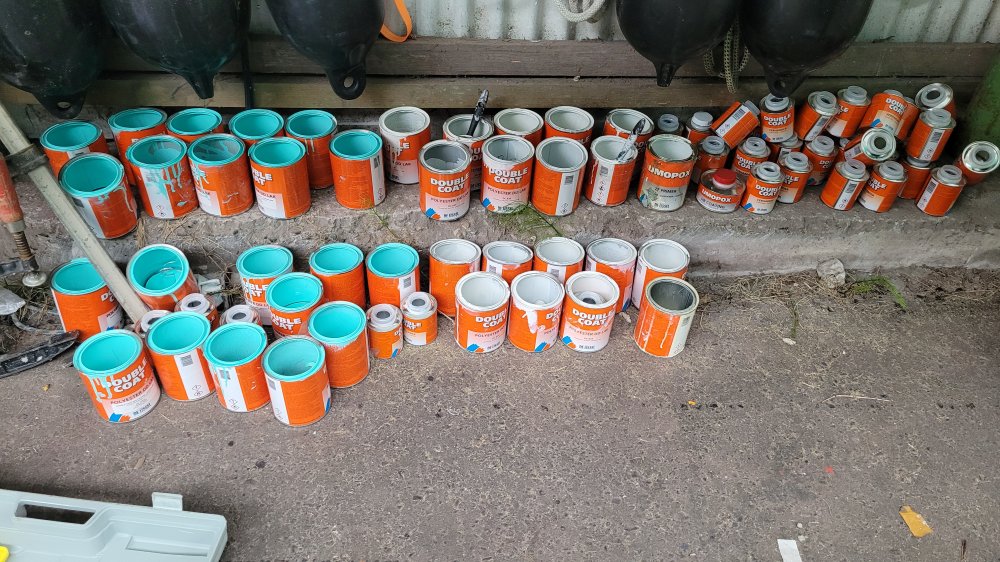
Remnants as memories of a period of hard work.
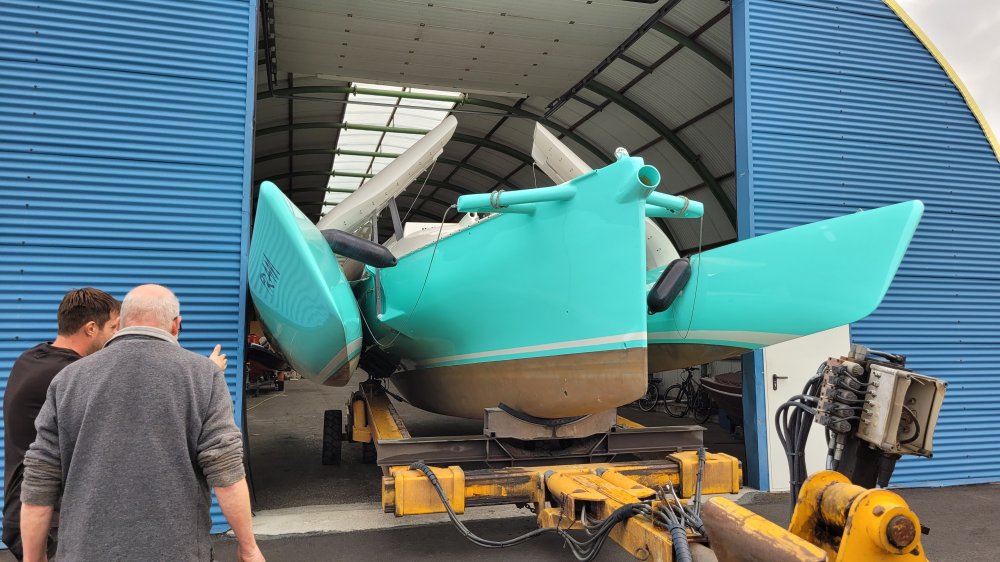
Back outside. It barely fits.
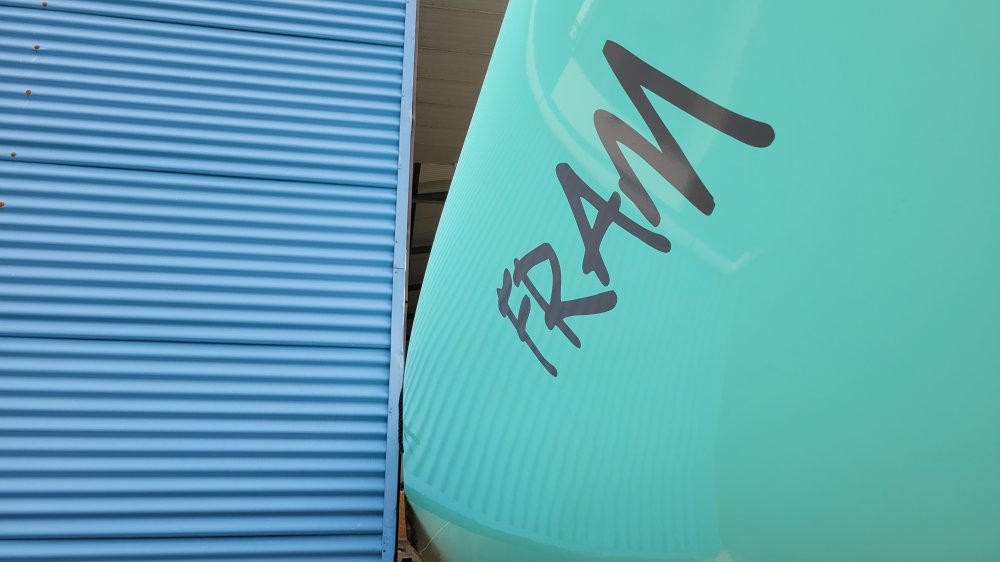
The clearance on either side is only 1 to 2 cm.
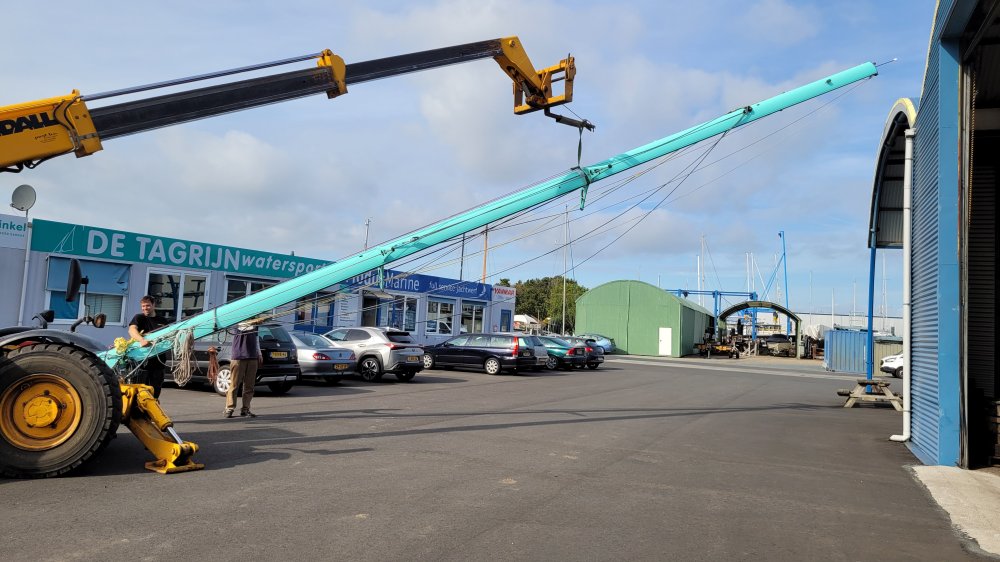
The mast is also going outside to be placed on Fram's deck.
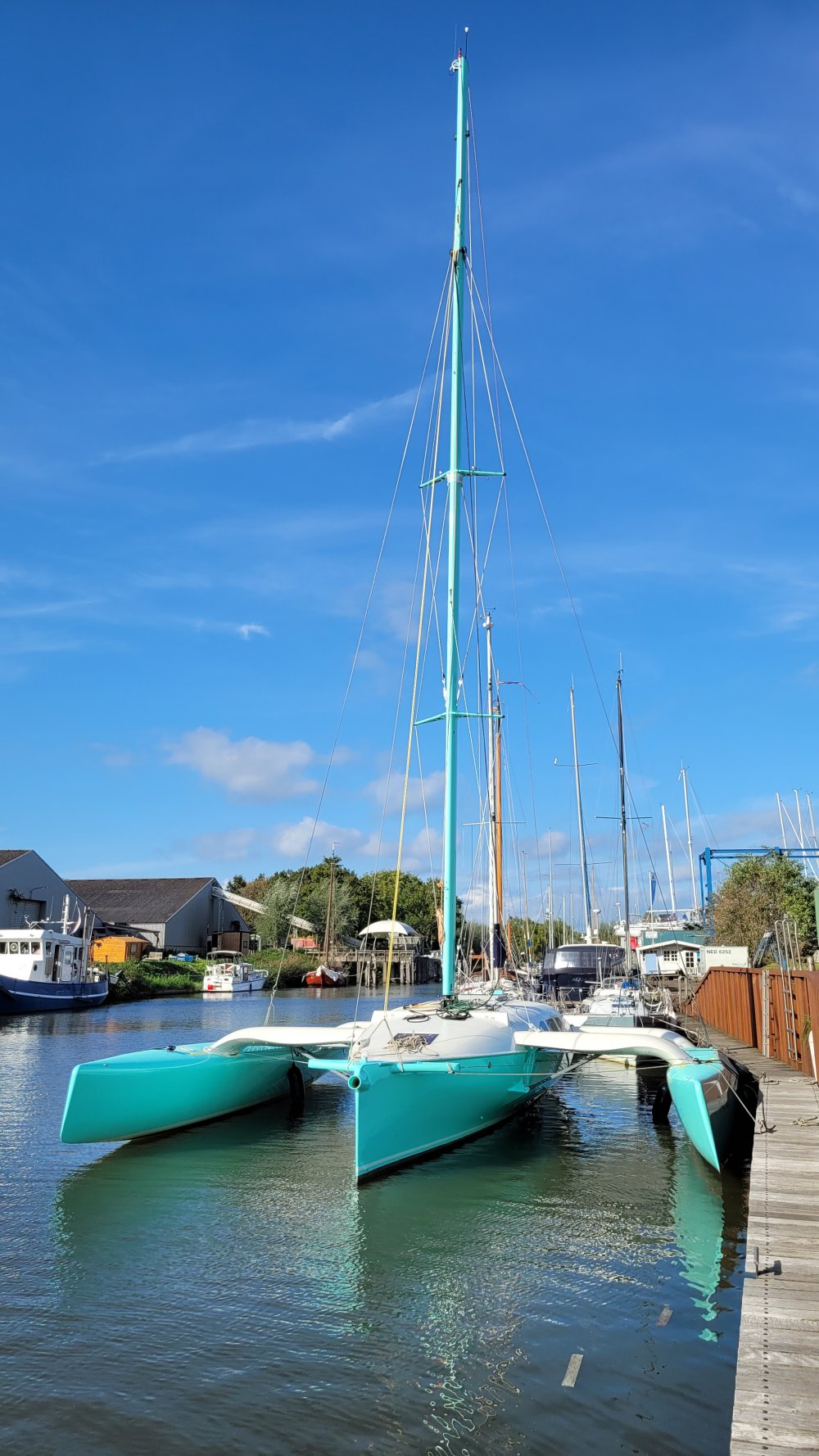
Finally!
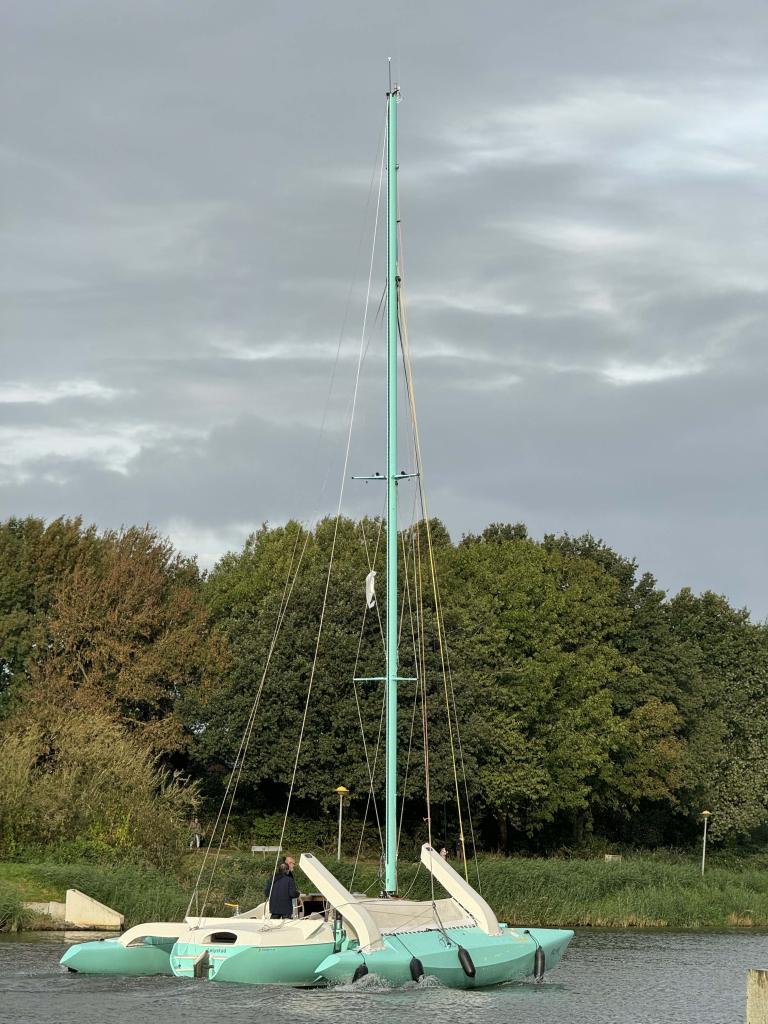
Back Home.
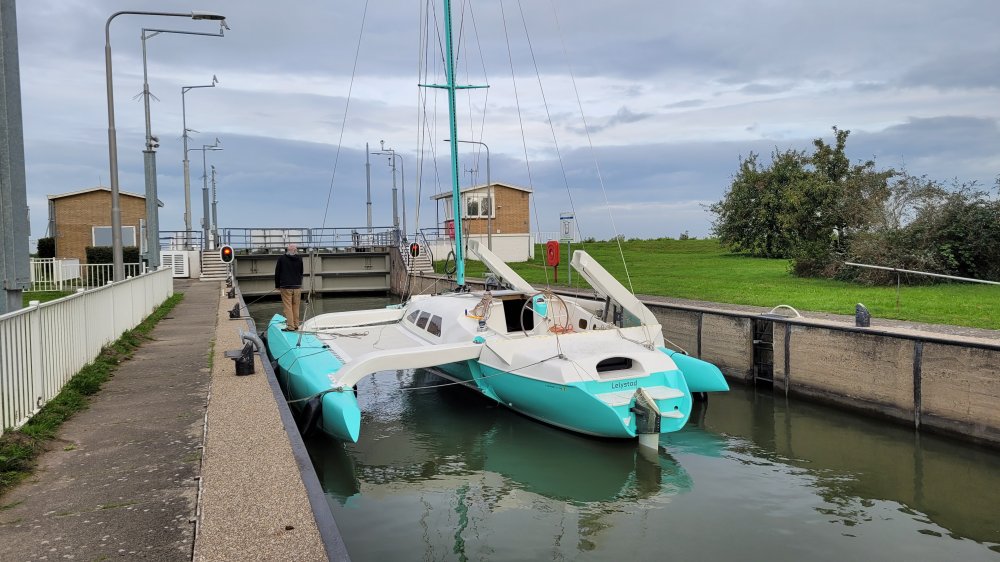
In the lock.

| « Previous Next » |